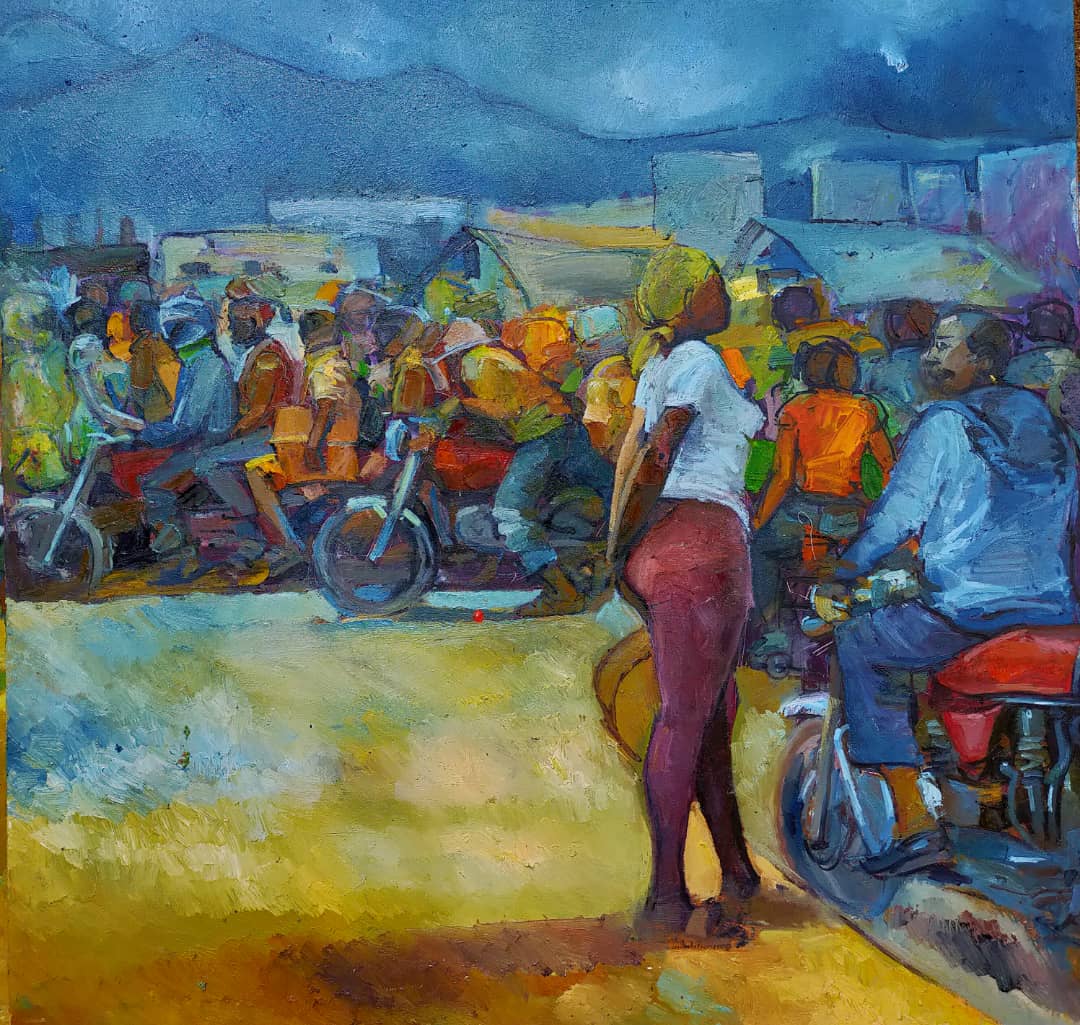The contest between the modern and the traditional visual expression
By Nathan Kiwere
Contemporary African art embodies a vibrant tapestry woven with threads of innovation, expression, and cultural evolution. Within the intricate landscape of the continent’s artistic heritage, it stands as a testament to the resilience and dynamism of creative expression. However, its journey towards recognition and integration within the rich tapestry of African artistry has been met with a complex interplay of challenges and triumphs, where the echoes of tradition resonate alongside the rhythms of modernity.
The juxtaposition of contemporary African art against the backdrop of traditional arts and crafts encapsulates a narrative that intertwines the old and the new, the customary and the avant-garde. It’s a narrative that underscores the multifaceted nature of African artistic identity, navigating between preserving heritage and embracing innovation. The struggle for coexistence or the possibility of overshadowing traditional forms is embedded in the fabric of this discourse, reflecting the dichotomy between honoring cultural roots and embracing artistic evolution.
At its core, traditional African art is deeply entrenched in the societal fabric, serving as a conduit for storytelling, spiritual expression, and communal identity. Its motifs, techniques, and symbolism are ingrained in the collective consciousness, woven intricately into rituals, ceremonies, and daily life. This entrenched nature of African traditionalism, steeped in centuries-old customs and beliefs, presents a formidable challenge for contemporary art to carve its niche and garner widespread acceptance.
Contemporary African art, characterized by its diverse mediums, experimental approaches, and engagement with global influences, seeks not to supplant but to complement and enrich the existing artistic panorama. Its emergence signifies a bold exploration of new avenues of expression while acknowledging and honoring the foundation laid by ancestral art forms. Yet, the acceptance and integration of contemporary art within African societies encounter barriers deeply rooted in cultural perceptions, socio-economic realities, and institutional frameworks.
One significant obstacle lies in the perceptions and interpretations of what constitutes ‘authentic’ African art. The allure of traditional forms, with their historical significance and cultural symbolism, often overshadows the appreciation for contemporary artistic endeavors. The romanticization of the past and the perception of traditional art as the epitome of African cultural identity create a challenge for contemporary artists to assert their relevance without alienating the audience deeply rooted in tradition.
Moreover, the socio-economic landscape plays a pivotal role in shaping the trajectory of contemporary art in Africa. Limited access to resources, inadequate infrastructure, and a lack of institutional support pose formidable hurdles for artists seeking to push the boundaries of creativity. The art market, both locally and globally, often favors traditional art, making it financially lucrative and thereby reinforcing its dominance in the artistic sphere.
Nevertheless, despite these challenges, the trajectory of contemporary African art is marked by resilience, innovation, and a growing resonance both within the continent and on the global stage. Artists are navigating these complexities by weaving narratives that bridge the old and the new, fusing traditional elements with contemporary expressions. They leverage diverse mediums – from painting and sculpture to multimedia installations and performance art – to articulate narratives that challenge stereotypes, provoke critical discourse, and celebrate the vibrancy of African cultures.
In recent years, a burgeoning art scene has emerged in various African cities, not least in Kigali, serving as hubs for creative expression and cultural exchange. These art spaces, galleries, and initiatives not only provide platforms for artists but also foster dialogue, collaboration, and appreciation for diverse artistic forms. The proliferation of art festivals, biennales, and exhibitions dedicated to contemporary African art amplifies its visibility and facilitates cross-cultural dialogue, fostering a deeper understanding of its significance.
Moreover, the digital revolution has acted as a catalyst for the dissemination and democratization of African art. Social media platforms, online galleries, and digital archives have transcended geographical barriers, allowing artists to showcase their work to a global audience and connect with art enthusiasts, collectors, and curators worldwide. This interconnectedness has not only expanded the reach of African art but has also empowered artists to challenge existing narratives and redefine the discourse surrounding African creativity.
The evolution of contemporary African art embodies a transformative journey, one that is inherently linked to the socio-cultural, political, and economic landscapes of the continent. As Africa navigates the complexities of globalization and cultural heritage, the coexistence of traditional and contemporary art forms presents an opportunity for dialogue, innovation, and a redefinition of artistic narratives.
To foster greater acceptance and integration, efforts must be made to bridge the gap between traditional and contemporary art. Education and awareness programs that highlight the significance and relevance of contemporary art in the context of African heritage can play a pivotal role. Encouraging dialogue between artists, cultural institutions, and communities can facilitate a deeper understanding and appreciation for the diversity within African artistic expressions.
Additionally, initiatives aimed at bolstering infrastructural support, fostering art education, and providing equitable opportunities for artists across various socio-economic backgrounds are crucial. Investing in the development of art institutions, residencies, and grants can empower artists and nurture an environment conducive to creative exploration and innovation.
Ultimately, the journey of contemporary African art towards gaining traction and acceptance within African societies is a multifaceted odyssey, marked by challenges, triumphs, and a continuous dialogue between tradition and innovation. As artists continue to navigate these complexities, their endeavors serve as catalysts for cultural renaissance, amplifying the narratives of Africa’s past, present, and future on the global stage. Through perseverance, creativity, and a commitment to authenticity, contemporary African art paves the way for a nuanced, inclusive, and dynamic artistic landscape that resonates across borders and generations.


Leave a Reply